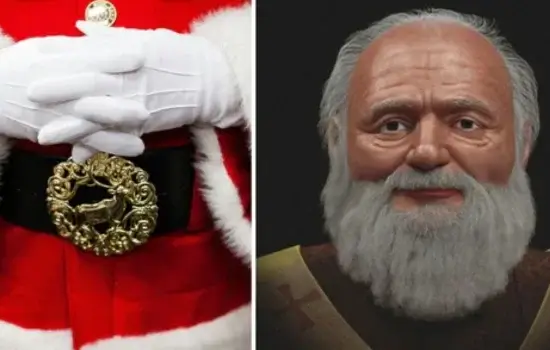For centuries, the image of Santa Claus has been synonymous with a jolly, bearded man delivering gifts during the Christmas season. This beloved figure traces his origins to Saint Nicholas of Myra, a 4th-century Christian bishop renowned for his generosity. Now, nearly 1,700 years after his death, scientists have utilized forensic technology to reconstruct what they believe to be the true face of the man behind the legend.
The Historical Saint Nicholas
Saint Nicholas served as the Bishop of Myra, in present-day Turkey, during the 4th century. He was celebrated for his acts of kindness, such as providing dowries for impoverished girls and aiding the needy. His benevolence inspired the Dutch figure Sinterklaas, which eventually evolved into the modern Santa Claus. Despite his significant influence, historical records offer limited descriptions of his physical appearance.
Forensic Reconstruction Methodology
The recent facial reconstruction was led by Cicero Moraes, a Brazilian graphics expert specializing in facial reconstructions. The team relied on data collected in the 1950s by Professor Luigi Martino, who had examined Saint Nicholas’s skull and bones. Using this data, the team created a 3D model of the skull, which served as the foundation for reconstructing the facial features.
Moraes explained that they employed statistical projections to outline the facial profile and used anatomical deformation techniques to adjust the tomography of a living person’s head to match the saint’s skull. The final image represents an interpolation of this information, aiming for anatomical and statistical coherence.
Revealed Features

The reconstruction depicts Saint Nicholas as having a robust and broad face, with a wide forehead, prominent cheekbones, and a distinctive nose. These features align with traditional depictions of Santa Claus, particularly the description in the 1823 poem “A Visit from St. Nicholas,” commonly known as “‘Twas the Night Before Christmas.” Moraes noted that the strong and gentle appearance of the face is “curiously compatible” with the poem’s portrayal.
Significance of the Reconstruction
This scientific endeavor provides a tangible connection to the historical figure of Saint Nicholas, offering insights into the man whose legacy has profoundly influenced Christmas traditions worldwide. Jos Luís Lira, a co-author of the study and an expert on the lives of saints, emphasized that Saint Nicholas was a bishop who courageously defended and lived the teachings of Jesus Christ, even at the risk of his life.
Conclusion
The forensic reconstruction of Saint Nicholas’s face bridges the gap between historical records and modern depictions, enriching our understanding of the origins of Santa Claus. As the holiday season approaches, this revelation adds a deeper dimension to the festive celebrations, reminding us of the enduring legacy of generosity and kindness embodied by the real Saint Nicholas.

